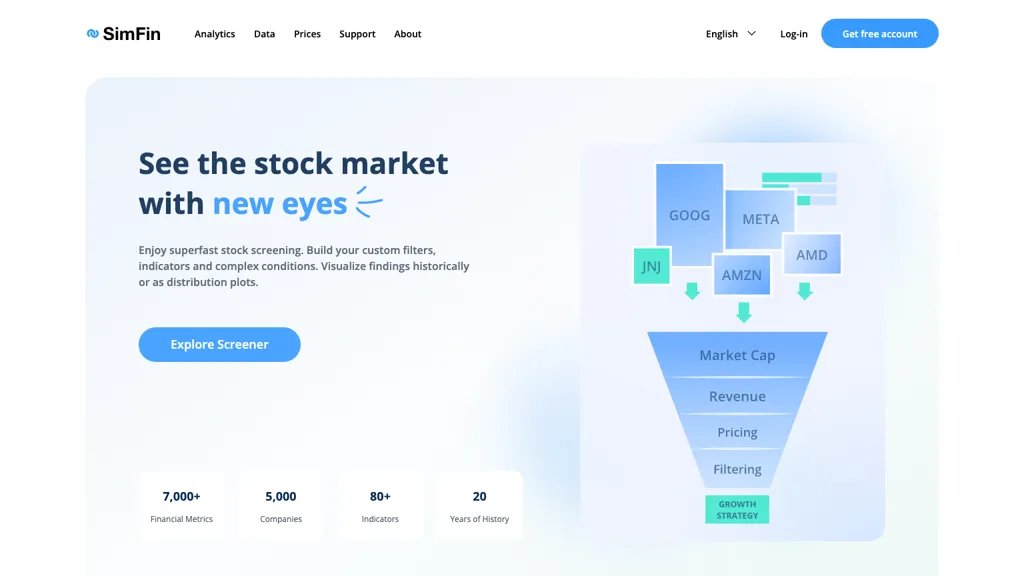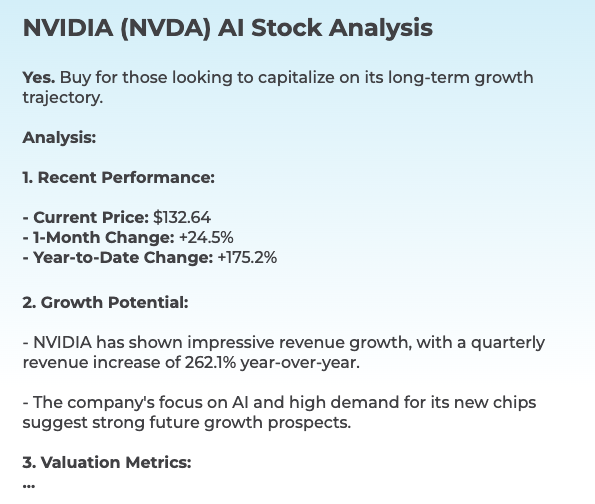20 Pro Info To Deciding On AI Stock Predictions Analysis Websites
20 Pro Info To Deciding On AI Stock Predictions Analysis Websites
Blog Article
Top 10 Tips To Evaluate The Ai And Machine Learning Models In Ai Trading Platforms For Stock Prediction And Analysis.
To guarantee accurate, reliable, practical insights, it's vital to evaluate the AI and machine-learning (ML) models utilized by trading and prediction platforms. A poorly designed or overhyped model can lead financial losses and incorrect predictions. Here are 10 best tips to evaluate the AI/ML platforms of these platforms.
1. The model's design and its purpose
Clarified objective: Determine the model's purpose, whether it is used for trading on short notice, investing long term, analyzing sentiment, or a risk management strategy.
Algorithm Transparency: Make sure that the platform is transparent about what kinds of algorithms are employed (e.g. regression, neural networks for decision trees or reinforcement-learning).
Customization. Find out if the model is able to be tailored to your trading strategies, or your risk tolerance.
2. Evaluate the Model Performance Metrics
Accuracy: Check the model's accuracy of prediction. However, don't solely rely on this metric. It can be misleading on financial markets.
Accuracy and recall. Examine whether the model is able to accurately predict price fluctuations and minimizes false positives.
Risk-adjusted return: Examine if the model's predictions result in profitable trades after taking into account the risk (e.g., Sharpe ratio, Sortino ratio).
3. Make sure you test your model using backtesting
Backtesting the model by using historical data allows you to evaluate its performance against previous market conditions.
Testing out-of-sample: Ensure that your model has been tested using data that it wasn't used to train on in order to avoid overfitting.
Scenario-based analysis involves testing the accuracy of the model under different market conditions.
4. Be sure to check for any overfitting
Overfitting: Be aware of models that are able to perform well using training data but not so well when using data that is not seen.
Regularization methods: Ensure that the platform does not overfit by using regularization like L1/L2 or dropout.
Cross-validation - Ensure that the model is cross-validated in order to assess the generalizability of your model.
5. Assess Feature Engineering
Important features: Make sure that the model is based on meaningful attributes (e.g. price or volume, as well as technical indicators).
Make sure to select features with care It should include statistically significant data and not irrelevant or redundant ones.
Dynamic feature updates: Determine that the model can be adapted to changes in characteristics or market conditions in the course of time.
6. Evaluate Model Explainability
Interpretation: Make sure the model provides clear explanations for its predictions (e.g., SHAP values, feature importance).
Black-box platforms: Beware of platforms that use excessively complex models (e.g. neural networks that are deep) without explainingability tools.
User-friendly Insights: Make sure that the platform offers an actionable information in a format traders are able to easily comprehend and utilize.
7. Examine the Model Adaptability
Market changes: Determine whether the model can adapt to new market conditions, like economic shifts or black swans.
Continuous learning: Make sure that the platform regularly updates the model by adding new data in order to improve performance.
Feedback loops - Ensure that the platform is able to incorporate real-world feedback and user feedback to enhance the system.
8. Check for Bias and fairness
Data bias: Ensure that the data used for training is a true representation of the market and is free of biases.
Model bias: Ensure that the platform actively monitors model biases and reduces them.
Fairness. Make sure your model isn't biased towards certain industries, stocks or trading techniques.
9. The Computational Efficiency of the Program
Speed: Find out whether your model is able to make predictions in real time or with minimal delay, particularly when it comes to high-frequency trading.
Scalability Verify the platform's ability to handle large amounts of data and users simultaneously without performance loss.
Resource usage: Verify that the model has been optimized to make efficient use of computational resources (e.g. GPU/TPU use).
10. Transparency and Accountability
Model documentation: Ensure the platform provides an extensive document detailing the model's architecture and the process of training.
Third-party audits : Verify if your model was audited and validated independently by a third party.
Error Handling: Determine if the platform has mechanisms to detect and correct errors in the models or in failures.
Bonus Tips
User reviews and Case studies User reviews and Case Studies: Read user feedback and case studies to assess the performance in real-world conditions.
Trial time: You may utilize an demo, trial or a free trial to test the model's predictions and usability.
Customer Support: Verify that the platform has solid technical or model-related assistance.
These suggestions will assist you to assess the AI and machine-learning models used by platforms for prediction of stocks to ensure they are reliable, transparent and in line with your goals for trading. Check out the top rated my sources for ai trading for website info including ai stock picker, investment ai, ai stock market, ai stock market, best ai stock, ai stock market, best ai stock trading bot free, ai stock trading bot free, ai for trading, ai investing platform and more.
Top 10 Tips To Evaluate The Social And Community Features In Ai Stock Predicting/Analyzing Platforms
To better comprehend how users interact, share and learn it is essential to assess the social and community aspects of AI-driven stock trading platforms. These features are a fantastic option to improve the users' experience and provide an excellent service. Here are ten suggestions to help you assess the social and community features of these platforms.
1. Active User Community
Tips: Ensure that the platform is in use and is regularly involved in discussions, sharing their insights, or providing feedback.
What is the reason: A vibrant community reflects a lively ecosystem where users can learn and grow together.
2. Discussion forums and boards
Tips: Check out the quality and engagement levels in message boards.
Why: Forums allow users to discuss strategies, ask questions and share market trends.
3. Social Media Integration
Tips - Make sure that the platform is compatible with social media platforms (e.g. Twitter and LinkedIn) to post information and updates.
Why is this? Social integration with media is a fantastic way to boost engagement and receive real-time updates on the market.
4. User-Generated Content
Consider features like the ability to write and publish content.
The reason: User-generated content encourages collaboration, and it provides different perspectives.
5. Expert Contributions
TIP: Find out if the platform is populated with contributions from experts from the industry like market analysts or AI specialists.
The reason is that experts' knowledge give credibility and depth to community discussions.
6. Real-time Chat and Messaging
Tips: Check the availability of instant chat and real-time messaging that allow users to talk in real-time.
Why? Real-time interactions facilitate quick information exchange and collaborative work.
7. Community Modulation and Support
Tip - Assess the support and level of moderation in your community.
How do you know? A well-balanced moderation strategy can help create a respectful and positive environment. Help is readily ready to address issues swiftly.
8. Webinars and Events
TIP: Make sure to check whether the platform is hosting webinars, events, or live Q&A with experts.
The reason: These conferences offer industry professionals with the opportunity to network with fellow participants and gain knowledge from them.
9. User Reviews
TIP: Find features that let users provide feedback or reviews on the platform and its community features.
The reason: Feedback from users helps to discover strengths and areas for improvement within the ecosystem.
10. Gamification and Rewards
TIP: Check whether the platform offers gaming elements, like badges or leaderboards.
Gamification is a powerful tool that helps users engage more closely with their communities and platform.
Bonus Tip: Privacy and Security
Ensure that the community and social features have robust security and privacy features to safeguard user data and other interactions.
These elements will allow you to decide if a trading platform and AI stock prediction can provide a friendly and supportive community to help improve your trading knowledge and experience. Check out the recommended ai share trading tips for site tips including best ai stock prediction, investing with ai, ai stock predictions, chart ai trading, ai for trading stocks, ai investment tools, best ai for stock trading, ai stock price prediction, best ai stocks to buy now, ai trading tool and more.